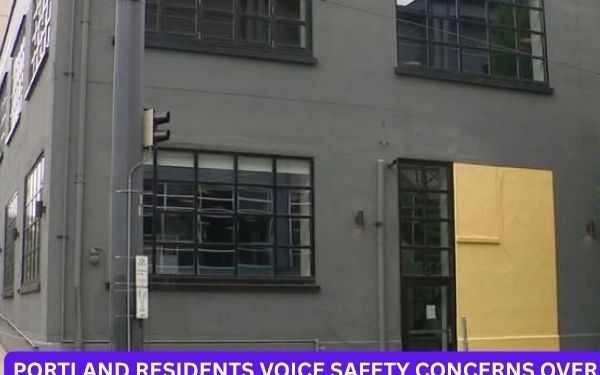PORTLAND (KATU) — A new 200-bed homeless shelter proposed for the Pearl District is facing pushback from some local residents who worry about potential safety and livability issues in the area.
The site, located at NW 14th Avenue and NW Northrup Street, just west of I-405, will start with fewer beds before eventually scaling up. The plan is part of the city’s effort to address its growing homelessness crisis.
Related posts
This Article Includes
- 0.1 Related posts
- 0.2 California Issues ‘Maroon’ Air Alert for 50,000 Residents Amid Emergency Pollution and Extreme Heat
- 0.3 8-Year-Old Girl and Her Dad Win $15,000 Walleye Tournament on Father’s Day
- 1 Advocates Say the Shelter Is Desperately Needed
- 2 Mayor Responds to Community Fears
- 3 Residents Call for Collaboration, Not Opposition
But many in the Pearl District say they’ve already shouldered more than their share.
“The Pearl District has already stepped up,” said Bill Truncali, a member of the Pearl District Neighborhood Association. “Even during the day, you can’t walk to Safeway without someone approaching you in an inappropriate way.”
Cathy Martin, president of the Pearl District Homeowners Association, echoed concerns about crime and drug use:
“My concern is now you’ve got a number of people in here using drugs, and you’re going to have drug dealers who see this as an opportunity.”
Advocates Say the Shelter Is Desperately Needed
Liz Starke, development director at Rose Haven — a nearby day center for women, children, and gender-diverse individuals — believes the shelter is essential.
“Unsheltered homelessness is really painful. We need more long-term housing, but shelters are also part of the solution,” Starke said.
“Most people experiencing homelessness are not drug users — they’re just going through a hard time.”
Mayor Responds to Community Fears
Mayor Keith Wilson responded to concerns with a statement emphasizing both urgency and accountability:
“Our city faces an unprecedented homelessness crisis, and I’ve committed to providing a safe bed for every person, every night by December 1st, 2025,” Wilson said.
To reassure residents, Wilson outlined measures the city will take in areas within 1,000 feet of a shelter, including:
-
Community engagement before opening
-
Street and sidewalk cleaning, graffiti removal, and inspections
-
Priority response for local complaints
-
Twice-daily livability checks by shelter staff
-
Direct contact with shelter operators and city staff
-
Resource connection services for shelter guests
Residents Call for Collaboration, Not Opposition
Despite their concerns, neighbors say they’re not against shelters — they just want them managed properly.
“If it’s done right, with security, addiction services, sanitation, and mental health care, we’re open to it,” said Bruce Struder, president of the Pearl District Neighborhood Association. “But that’s not the example we’ve seen elsewhere in the city.”
Portland Solutions, the shelter’s operating organization, said it is actively engaging with neighborhood groups and committed to ongoing dialogue.
As the city races toward its self-imposed December deadline, the Pearl District shelter has become a flashpoint in Portland’s broader debate over how to balance urgency, safety, and compassion.









